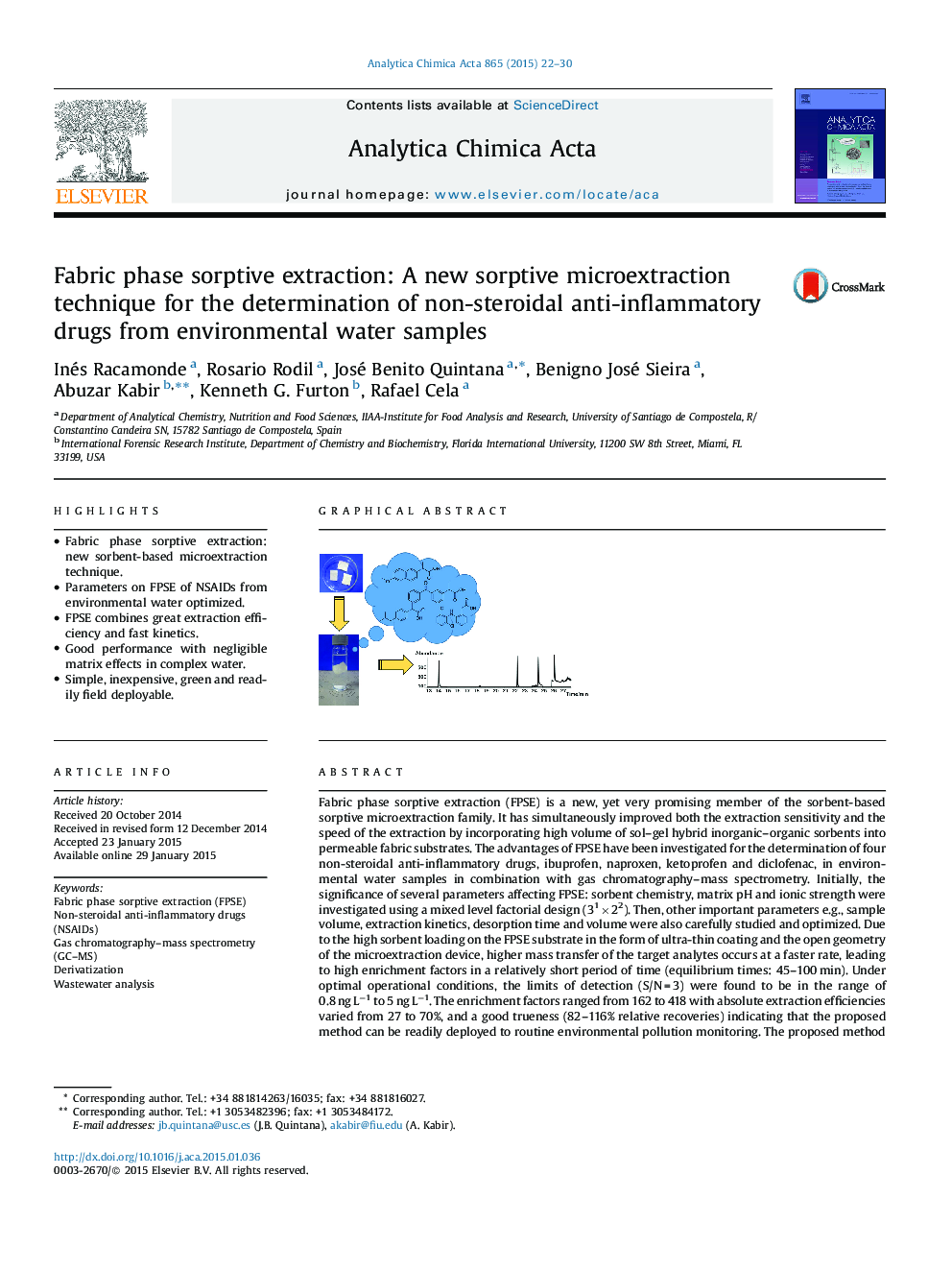| کد مقاله | کد نشریه | سال انتشار | مقاله انگلیسی | نسخه تمام متن |
|---|---|---|---|---|
| 1164022 | 1490967 | 2015 | 9 صفحه PDF | دانلود رایگان |

• Fabric phase sorptive extraction: new sorbent-based microextraction technique.
• Parameters on FPSE of NSAIDs from environmental water optimized.
• FPSE combines great extraction efficiency and fast kinetics.
• Good performance with negligible matrix effects in complex water.
• Simple, inexpensive, green and readily field deployable.
Fabric phase sorptive extraction (FPSE) is a new, yet very promising member of the sorbent-based sorptive microextraction family. It has simultaneously improved both the extraction sensitivity and the speed of the extraction by incorporating high volume of sol–gel hybrid inorganic–organic sorbents into permeable fabric substrates. The advantages of FPSE have been investigated for the determination of four non-steroidal anti-inflammatory drugs, ibuprofen, naproxen, ketoprofen and diclofenac, in environmental water samples in combination with gas chromatography–mass spectrometry. Initially, the significance of several parameters affecting FPSE: sorbent chemistry, matrix pH and ionic strength were investigated using a mixed level factorial design (31 × 22). Then, other important parameters e.g., sample volume, extraction kinetics, desorption time and volume were also carefully studied and optimized. Due to the high sorbent loading on the FPSE substrate in the form of ultra-thin coating and the open geometry of the microextraction device, higher mass transfer of the target analytes occurs at a faster rate, leading to high enrichment factors in a relatively short period of time (equilibrium times: 45–100 min). Under optimal operational conditions, the limits of detection (S/N = 3) were found to be in the range of 0.8 ng L−1 to 5 ng L−1. The enrichment factors ranged from 162 to 418 with absolute extraction efficiencies varied from 27 to 70%, and a good trueness (82–116% relative recoveries) indicating that the proposed method can be readily deployed to routine environmental pollution monitoring. The proposed method was successfully applied to the analysis of target analytes in two influent and effluent samples from a wastewater treatment plant and two river water samples in Spain.
Figure optionsDownload as PowerPoint slide
Journal: Analytica Chimica Acta - Volume 865, 20 March 2015, Pages 22–30